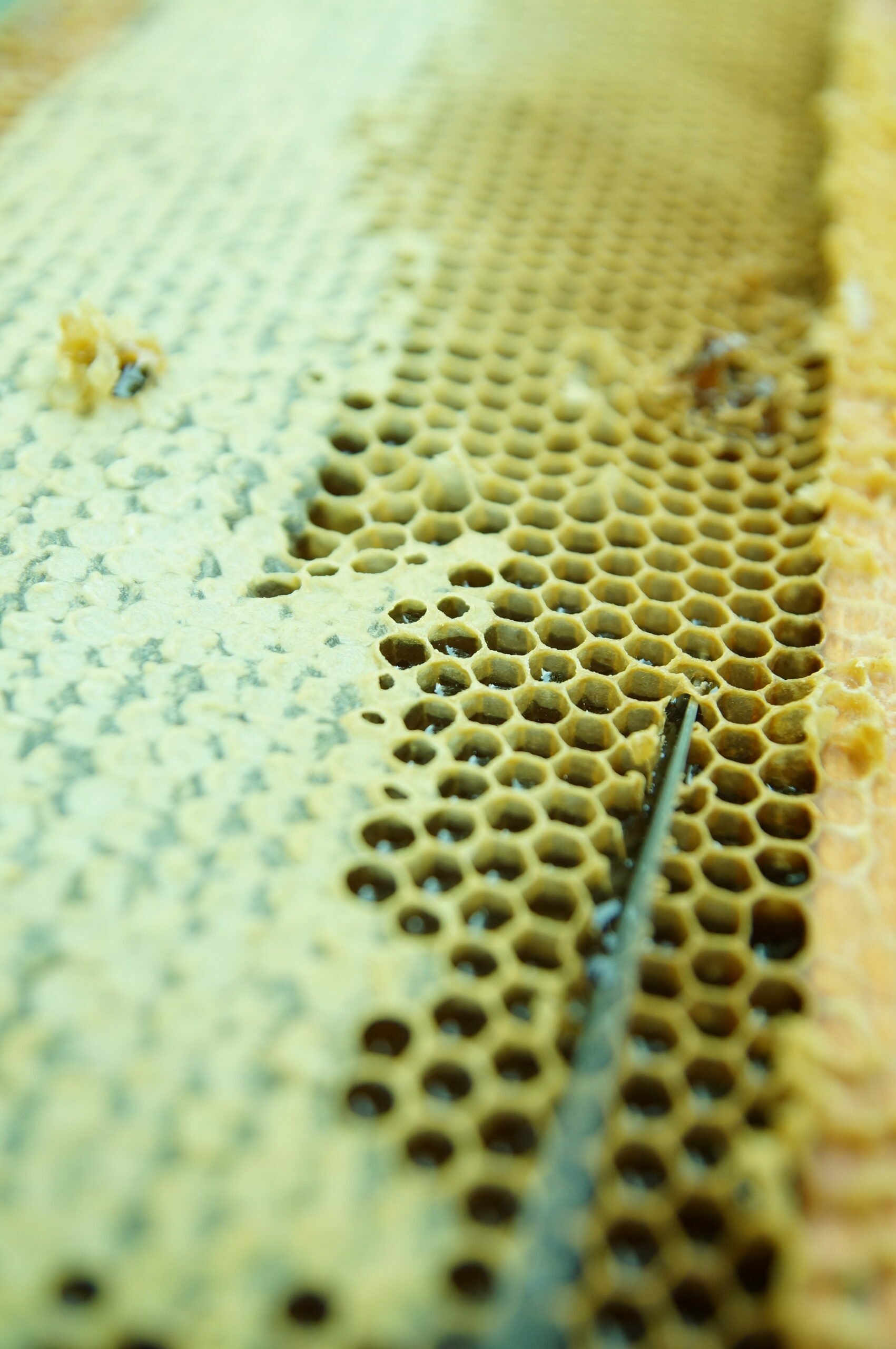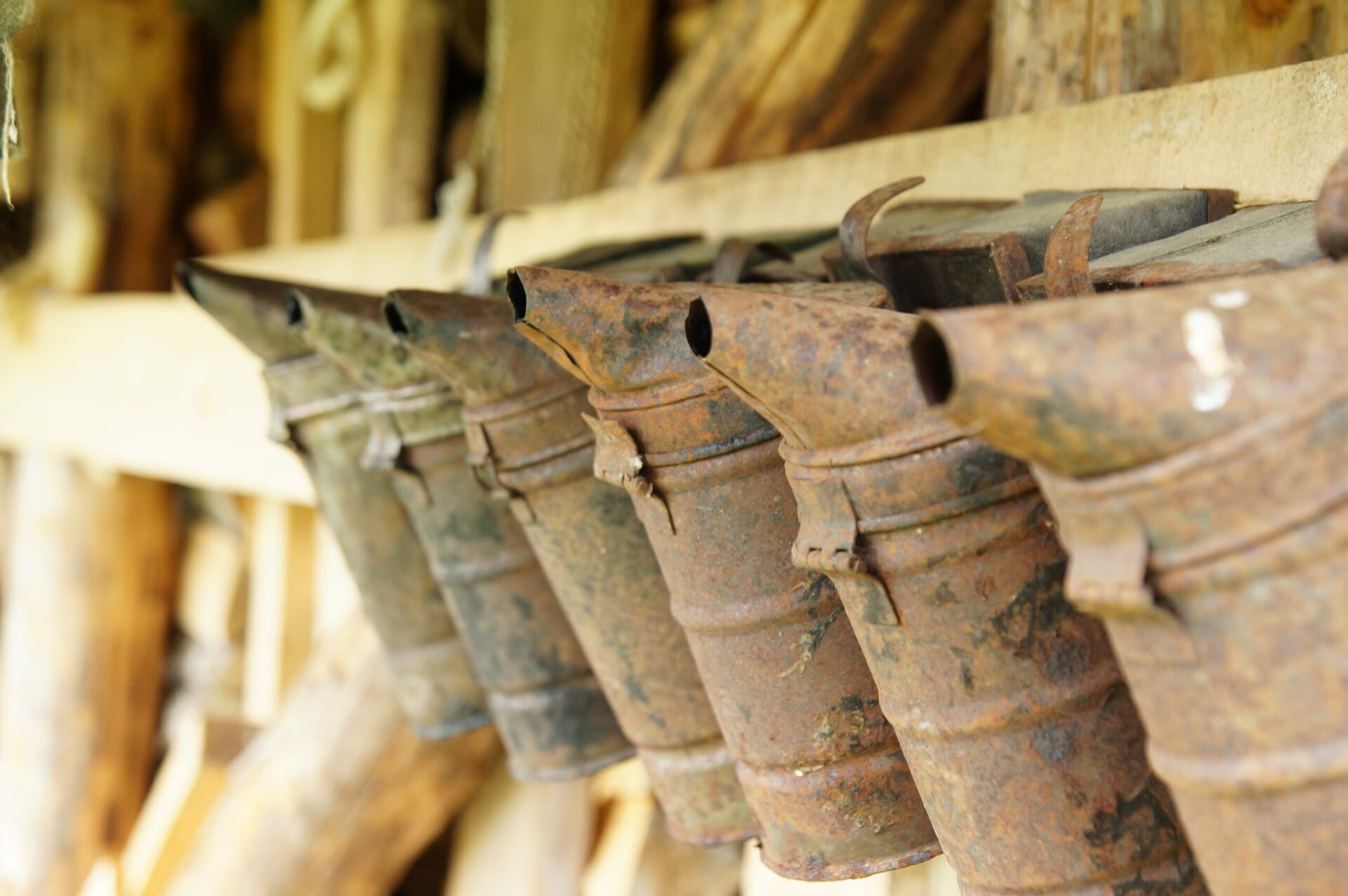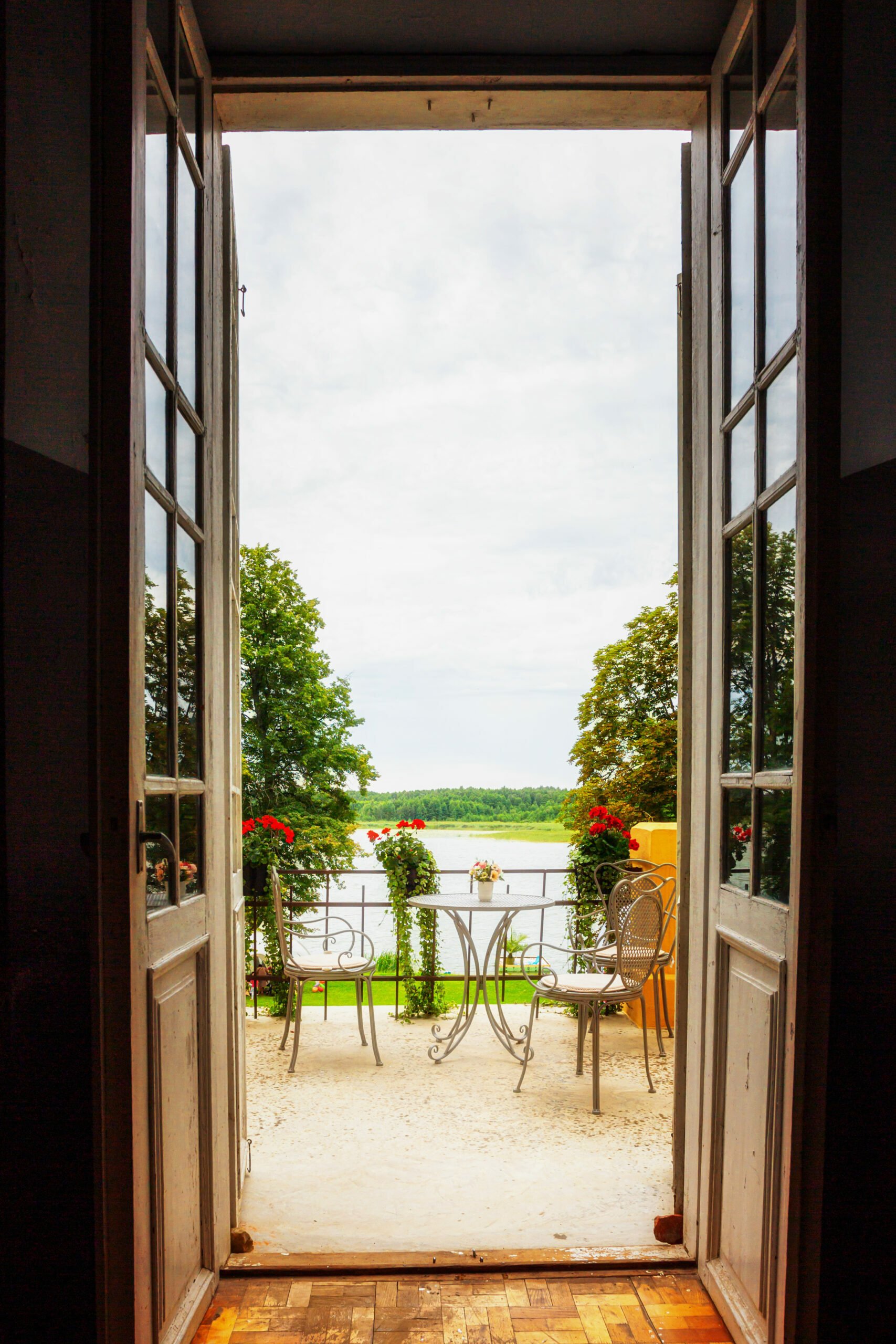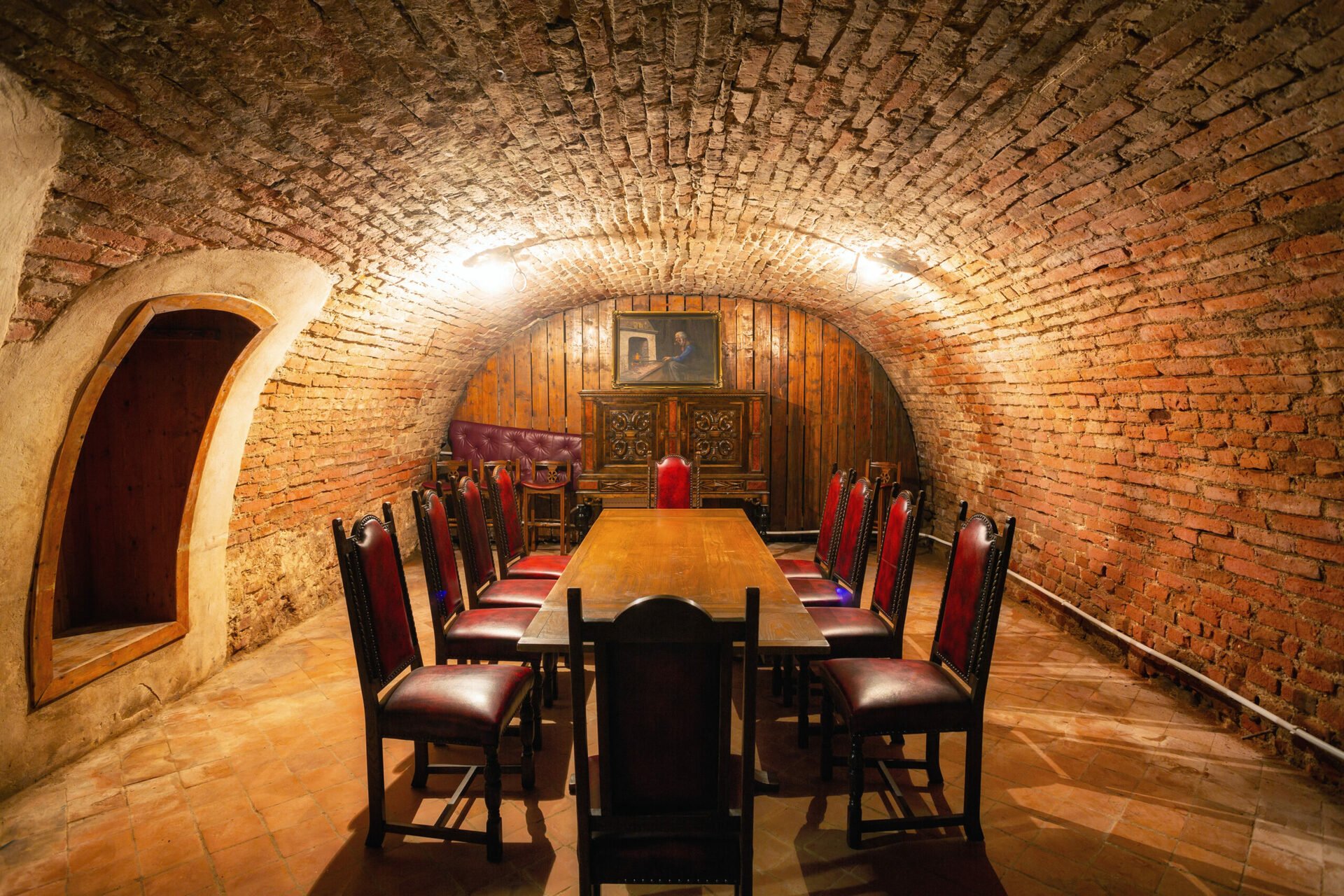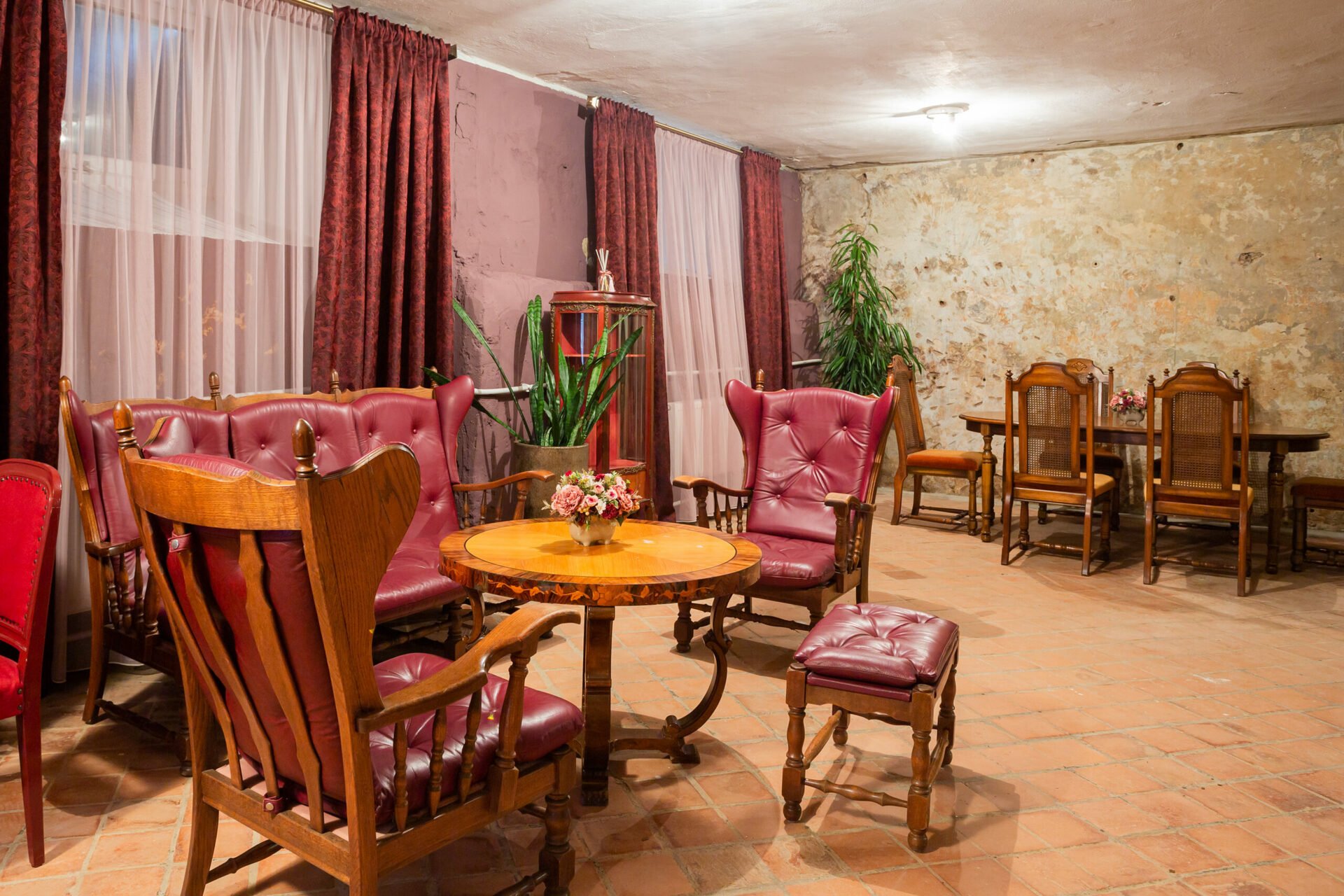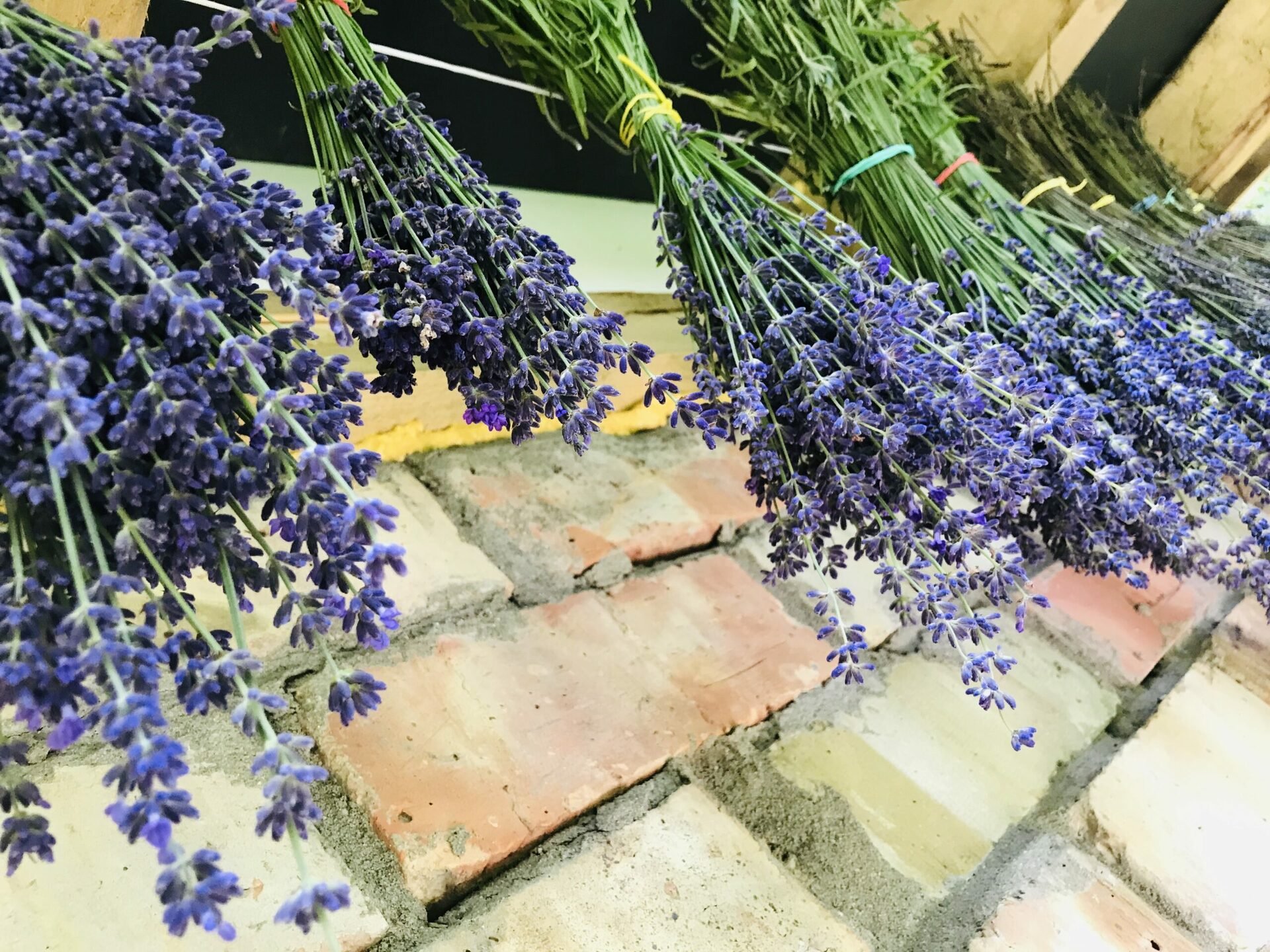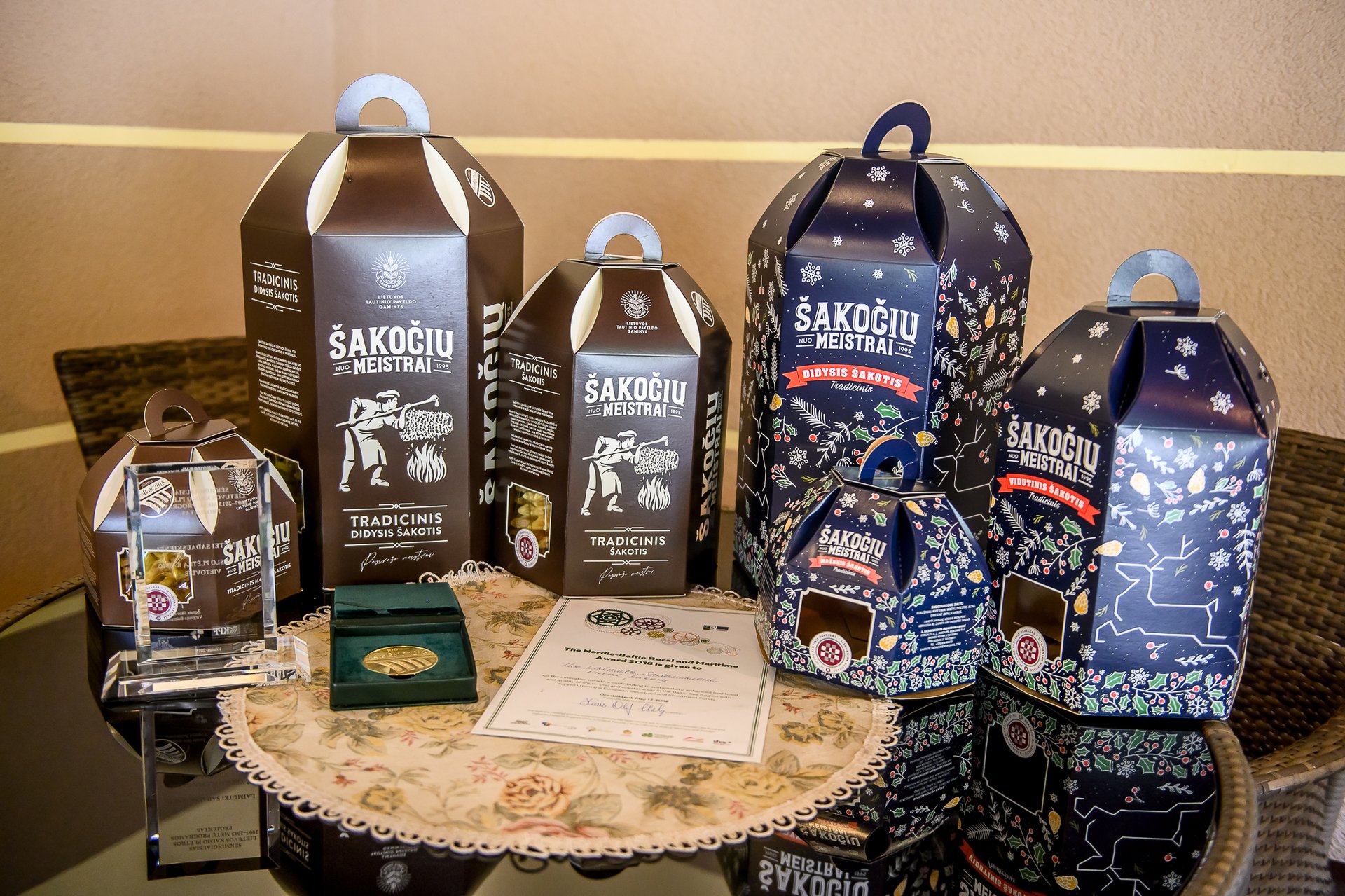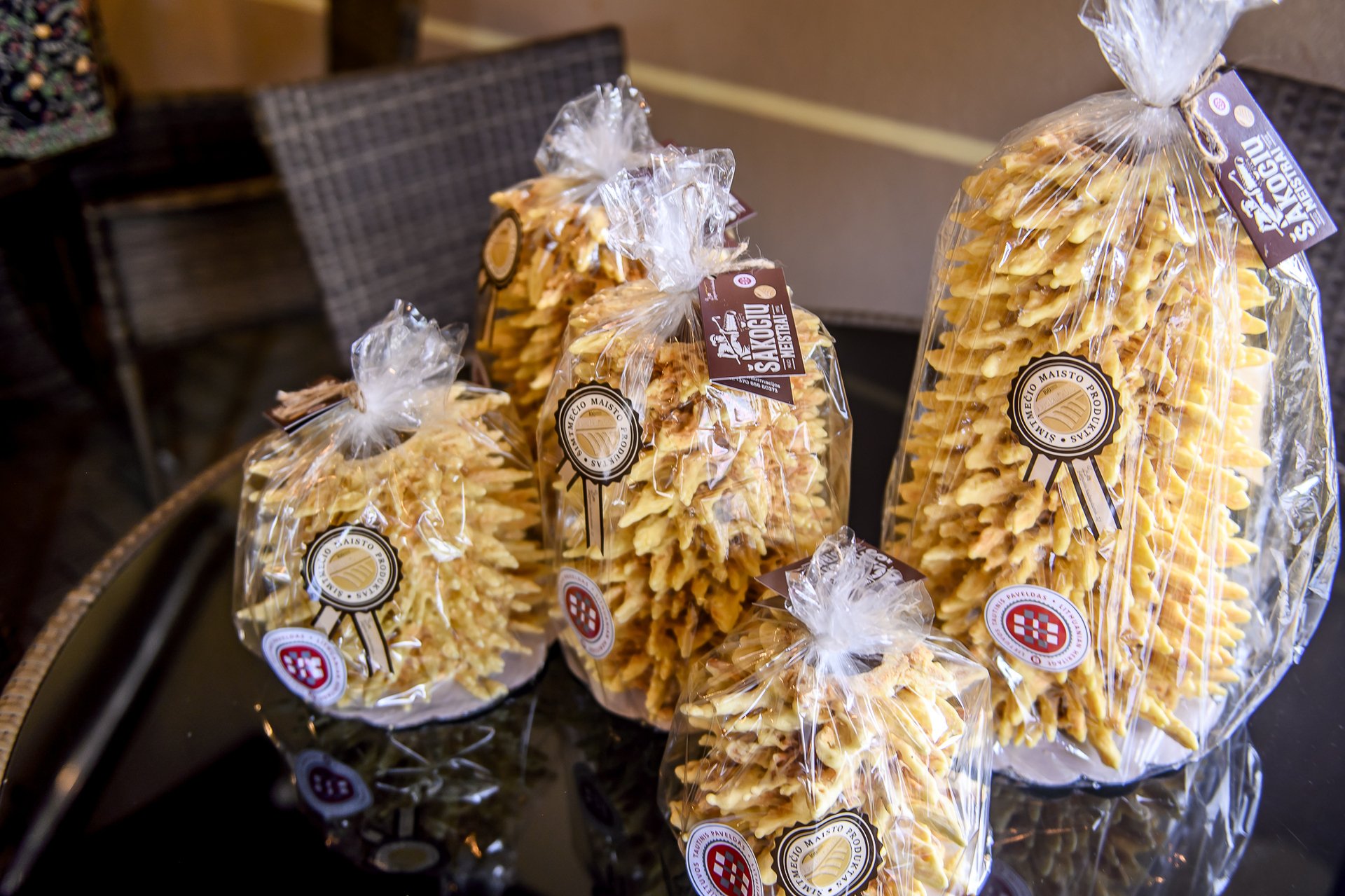In the summertime Rokiškis region is pulsating with culture and art. However, sometimes you just really want to relax and get into the carousel of entertainment by visiting the places with delicious dishes, education programs and summer fun. On the border in the North of Lithuania where the descendants of selonians are living and working here, we can find everything no matter what the heart wants. For instance, the Cultural Center of Rokiškis suggests starting from getting to know the region with a theatrical excursion around Rokiškis old town. One of them is for kids and another one is for adults. You can feel the spirit of the old times while walking through Counts of Tyzenhaus footprints. The history goes through the Rokiškis manor stairs then through the historian center of town built by Tyzenhaus and up to the churchyard of neo gothic style St. Matthew Apostle Church built by them also. Through your headphones you can hear the stories all about the love and work that Count Sofia Tyzenhaus did. The unknown old town of Rokiškis with all the local artists is a great start of the trip.
An exclusive dinner with a glass of wine
Rural tourism homestead “Roksala” owned by wine maker is making you feel like you are in Italy or France. In South countries winemaker homesteads are the part of culture. However, Lithuanians also drank wine. Winemaker Lukas Nagelė inherited these traditions from his father Raimundas Nagelė who inherited from his. Today the father and the son are working together. One of the most praised wine is made out of rhubarb. Very original taste has the wine that is made out of the cranberries collected in the forest close by the homestead.
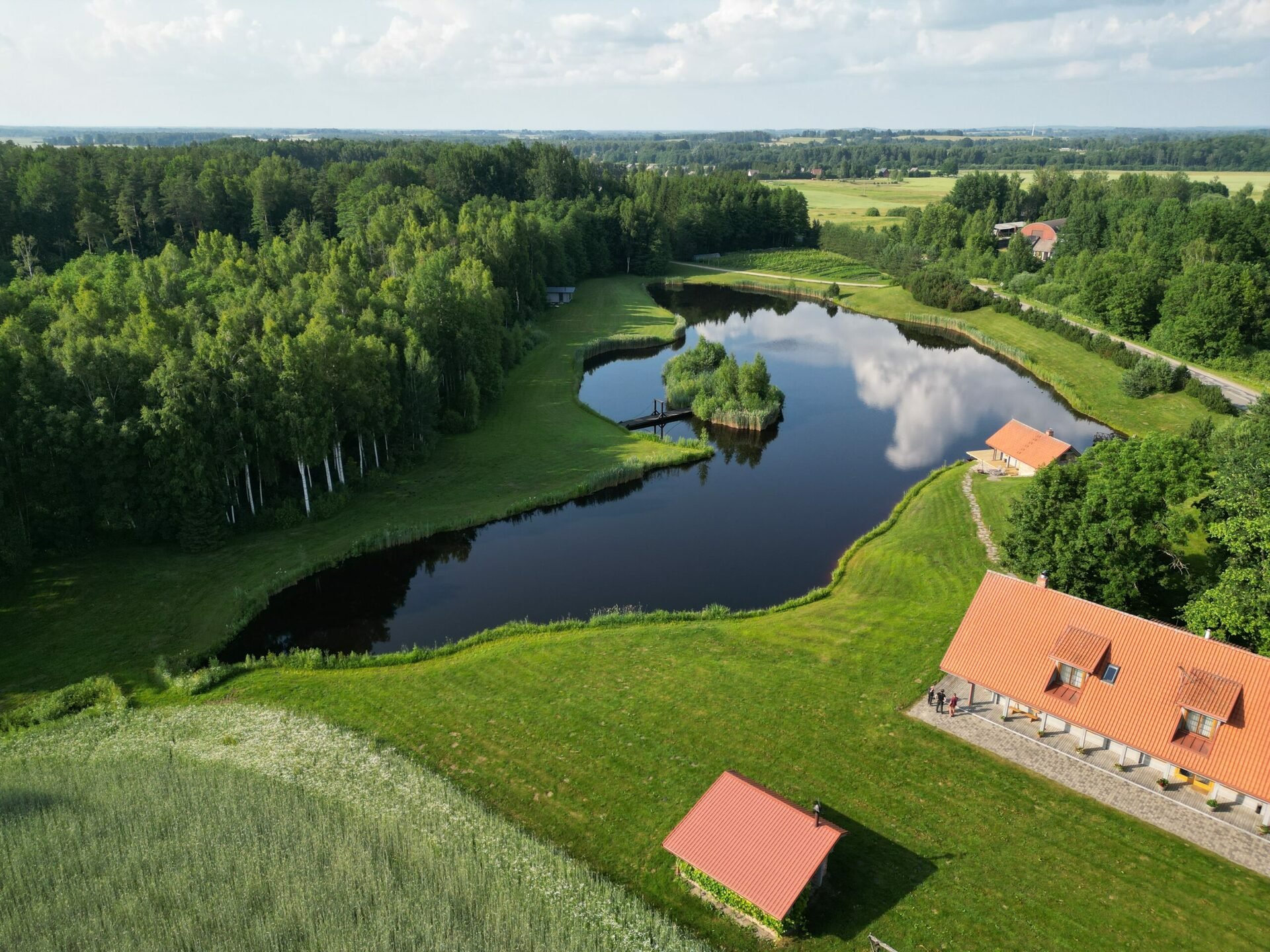 The family welcomes tasting from big groups to even one or to people. You can make a reservation with lunch or dinner. In the wine cellar there are a lot of wines from Latvia and from different southern countries.
The family welcomes tasting from big groups to even one or to people. You can make a reservation with lunch or dinner. In the wine cellar there are a lot of wines from Latvia and from different southern countries.
Because of a lot of experience in producing berries, the family started to grow their own grapes. One day, thanks to the winemakers, these berries just as the ordinary Lithuanian berries will become the gourmand drink.
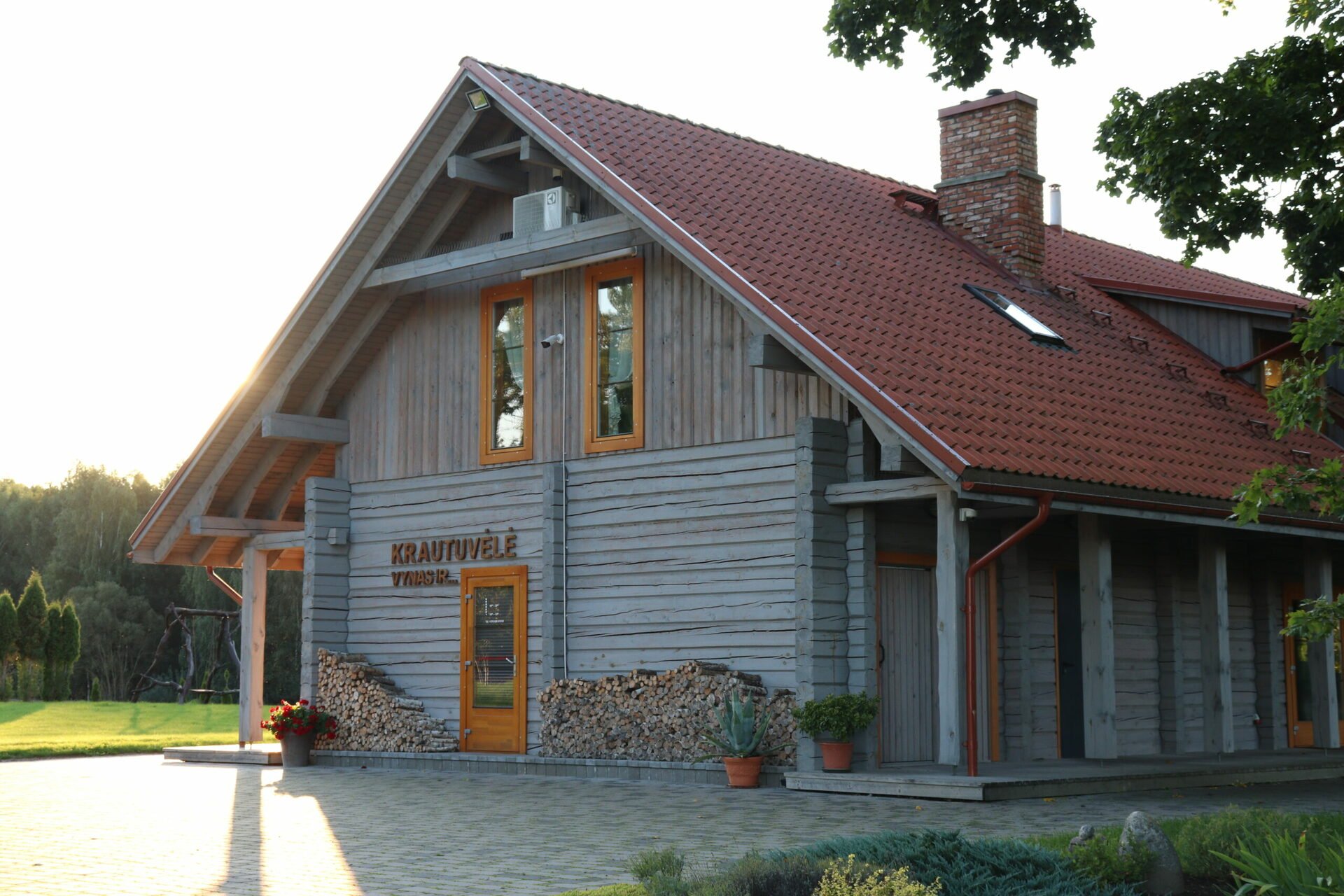
The manor of Salos is full of education and tree park rustle
If you have a chance to fly over the biggest island of the lake Dviragis, you would see the miniature contours of Lithuania. The interesting fact is that Lithuanian contours you can find three times in the nature of Rokiškis region. The main decoration of Salos that has been counting more than one century already is the classicism style manor. The famous Italian relatives Morikoniai with Bona Sforza came to Lithuania and started to build the manor. Later on, Counts Tyzenhaus started to threw feasts at the manor that not everyone could come that way the place became more and more known. The manor was chosen by producer J. Krisiūnas to film a movie ”I Want to Live” (Lithuanian: “Širdys” 2018).
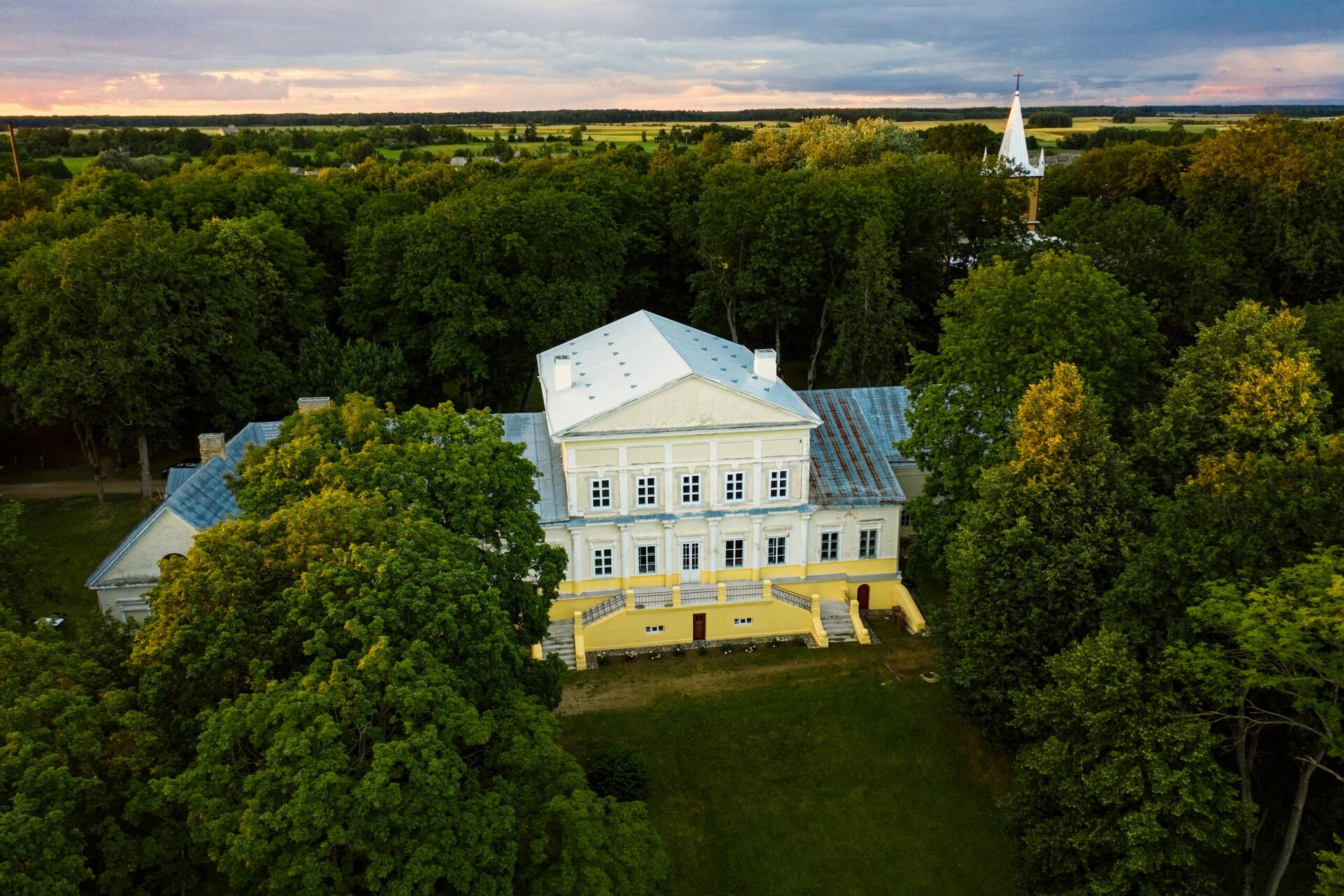 Last spring manor Salos revived. Since April the manor opened a residence for creating and leisuring which is getting more and more popular among students and families. A lot of different creative workshops are open here and also you can learn different crafts.
Last spring manor Salos revived. Since April the manor opened a residence for creating and leisuring which is getting more and more popular among students and families. A lot of different creative workshops are open here and also you can learn different crafts.
The spirit of the residence is a farmer Birutė Dapkienė who is fully devoted to this activity. She creates and manages workshops, prepares plein air and exhibitions. After work the family farm is waiting for her with the breeding Aberdeen Angus. She raises horses as well. They are ridden by kids and upcoming participants of show jumping. The little ones are being introduced with rabbits, llamas, pony and little horse. Families enjoy visiting the sculpture park ”The Island of Gods” (Lithuanian: “Dievų sala”). They can meet different animals and walk around here. Almost 24 hours per day working Birutė, especially in Summer, she and her husband Virginijus Dapkus for vacation choose to go to Africa in winter to relax. By watching wild animals, they recharge with the energy for summer. Her husband was the one who made her fall in love with Africa and traveling. The family hires the guide and travels through extreme routes in nature. In African safari sometimes they sleep in exotic houses. That’s how the idea of building a couple similar types of houses in their swamp came from. So the guests who run away from all the intense work, just like they did, would find a little Africa in Lithuania with Lithuanian adrenaline. However, for now Birutė is preparing for summer camps and plein air. The horses and llamas she is promising to put up close to the manor of Salos so the kids could ride them and see the animals right on the spot.
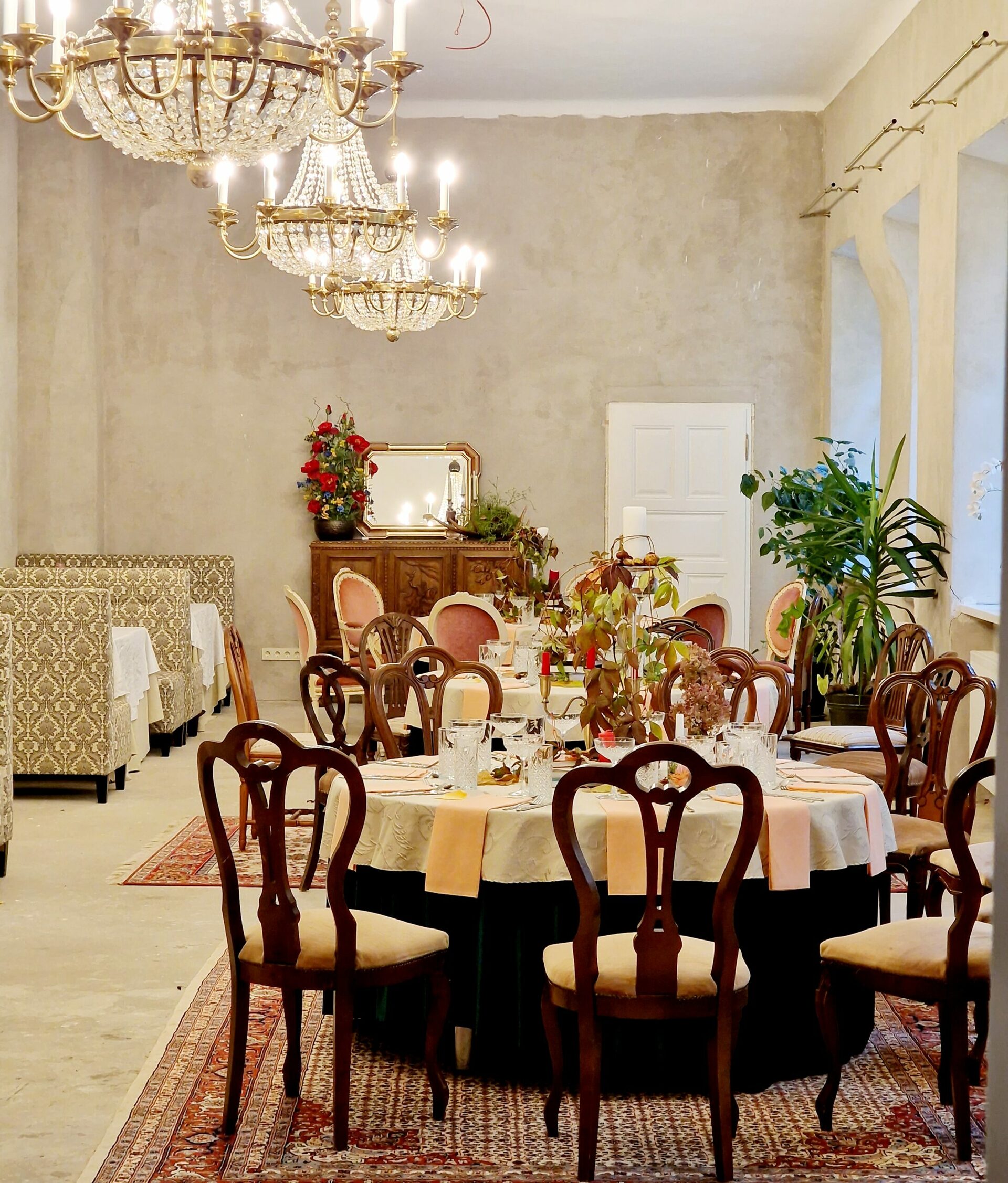 The Salos manor and a little town can be reached by raft “Dviragis” and everyone can experience a summer adventure on the water. Perhaps not a lot of people can say that they swam with a raft for two hours on Lithuanian lake. Full tour around the lake can be ordered for five hours with education program in Salos and lunch (best for up to 16 people but available for individuals as well). The Salos is surrounded by the lake Dviragis and if it’s not for the embankment and the road that was built then the town would be reached only by swimming. On the way, usually everyone stops to swim where the waterfall can be found.
The Salos manor and a little town can be reached by raft “Dviragis” and everyone can experience a summer adventure on the water. Perhaps not a lot of people can say that they swam with a raft for two hours on Lithuanian lake. Full tour around the lake can be ordered for five hours with education program in Salos and lunch (best for up to 16 people but available for individuals as well). The Salos is surrounded by the lake Dviragis and if it’s not for the embankment and the road that was built then the town would be reached only by swimming. On the way, usually everyone stops to swim where the waterfall can be found.
The park near the manor of Salos where hundred-year trees can be found, is a great place for people who are looking for relaxation.
The floating islands just like in the lake of Titicaca
The story about the floating islands in the lake of Bedugnė brought us to the homestead of the beekeeper and forester Sigitas Prievelis in the village Mikniūnai, neighborhood of Kamajai. In a meadow full of flowers, the sound of bees can be heard. We sat in the summerhouse. On the table appeared to be fresh honey, cheese and the highest quality of Japanese tea. We listened to stories about floating islands on the lake of Bedugnė. The name of the lake Bedugnė or just the name itself is not the only one in Lithuania there are a lot of names like this. It’s hard to tell if all of them are actually bottomless… In this lake when it was tried to reach the bottom it was not successful. According to the legend, the shepherds were taking care of cows, they were burning the fire and they lit up the peat. The peat was burning for a long amount of time up until the lake was formed. At the age of Smetona, islands took place for around 10 ha, the lakes – around 0,5 ha and around 5 ha of swamps. At some point it was decided to dry it up. In around 1978 after the little lakes became more popular, that lake was pounded. Floating islands take 10 ha just as it was then and 50 ha belongs to the lake.
Fishermen in this lake had experienced all kinds of scary but happily ended stories. Only electric men were not laughing when islands would short circuit wires and even catch on fire. When electrics would come to cut the trees under the wires, the island would be on the other side of the lake. They had to install the concrete pillars in other places and rebuild the wires. On the lake edges there is a 3-meter-deep swamp and in the middle is bottomless, peat. The water of this lake is very soft. It has some fish in it but also there are enough otters and they eat fish.
Islands move about 10 kilometers per hour. When it catches inertia, it can even go over the shore. When islands collide and split up after that ten islands just float at once. Islands take everything that’s on their way so all the fishermen equipment is gone and that is why the lake never overgrows. One of the islands is only 1 ha in size but the trees are growing there and people go to collect mushrooms and berries. If people go on other islands it is possible that they are going to sink. When we came, the islands were next to the shore but when we left, Sigitas sent us a photo where the islands were gone. That is why this lake is never going to be boring for locals or guests.
Rolandas’ homestead – an inspiration for creating
Would you like to go fishing in 10 different lakes and sleep over at the old exotic homestead (with all benefits) or at the little exotic houses, then you should visit Ronaldas Jasiūnas’ homestead at village Vainekiai, neighborhood of Kamajai. All family, relatives and some helpers are working together. For instance, the uncle of Rolandas is suggesting a professional relaxing massage after the sauna session. At the homestead is an authentic steam sauna.
When the homestead was bought 23 years old, it did not have electricity and it was all abandoned. The barns and an old cottage house became guest houses that are cozy and exotic with authentic elements in them. Those who like gardening will be pleasantly surprised by the very nice and full of old species apple tree garden.
Every year the painting plein airs are happening at the homestead. When we came here, the artists were working on their paintings next to their easels. So many sculptures are decorated around the homestead. Family men, just like some easterners, were increasing the art of cooking by lighting the fire and making exotic dishes in the Uzbek kazan.
There are so many more creative people and original homesteads. For example, at the Juodonys village all trees are decorated with colorful bird nesting boxes and homesteads are decorated with flags. They are changing everything all over again so it would be a happier and more beautiful place to live in.
Lavenders reminds of England and Provence
Aušra Kiselė earned all the money in England for business in Lithuania. She and her husband just as many people in England would go to lavender fields on weekends. Guests that come are offered to drink tea, enjoy delicious desserts with lavenders and in general to have a good time. After deciding to open up a lavender field in Lithuania, she visited all the beauty in Provence. Today at the village Štaronys, neighborhood of Južintai, Aušra has been growing white, pink and dark blue lavenders. She makes scented pillows and hydrolats. Every year she expands the lavender fields and dreams to expand it up to 10 acres. Her father is a beekeeper and so the bees are collecting scented honey.
Another lavender field in this region is at Vanagynė village, neighborhood of Juodupė. Different kinds of education programs, celebrations and women camps are happening there.
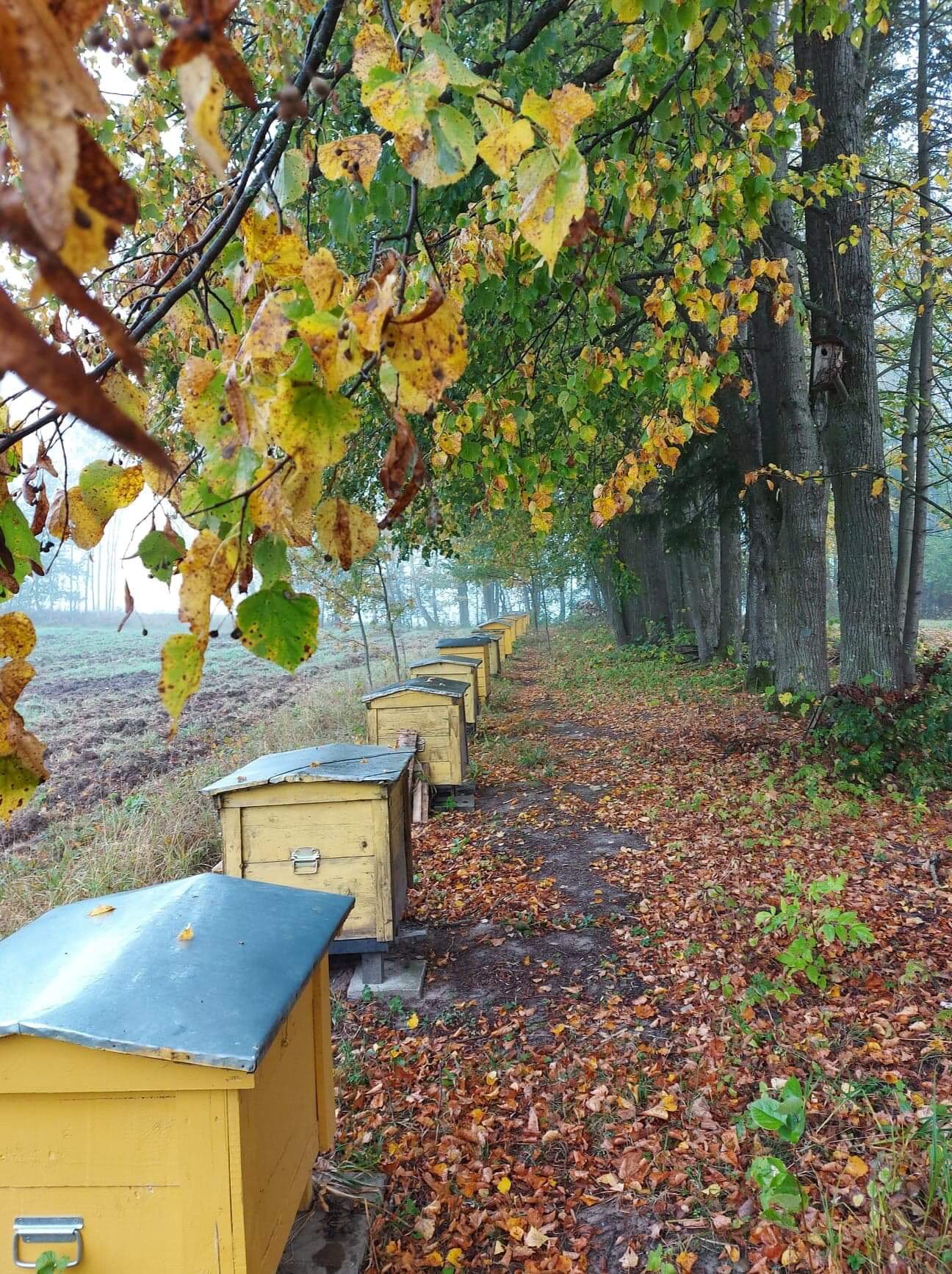
It is time for sweet and delicious desserts in Juodupė
Laimutė Sadauskienė’s little mushrooms and Tree cakes (Lithuanian: “Šakotis”) are eaten not only by Lithuanians but also by sweet tooth from other European countries. The woman has been working for 25 years in this classic sweets business. Laimutė is making the tree cakes in electric and firewood ovens. The visitors of “Green week” that happens in the beginning of the year in Germany know Laimutė very well. At the biggest food fair, she baked the biggest recorded tree cake that weighed 45 kilograms.
After participating in different food fairs around the other countries she made sure that tree cake is most popular among Polish, Latvians, Estonians, Russians, Germans however, French people and Italians are more careful and they are less enthusiastic to try it. Lithuanians usually buy tree cake for family or other celebrations. Laimutė’s tree cakes and mushrooms are made out of country eggs, butter, sour cream and flour. Record holder is doing education programs and teaches everyone how to make and become a tree cake baker.
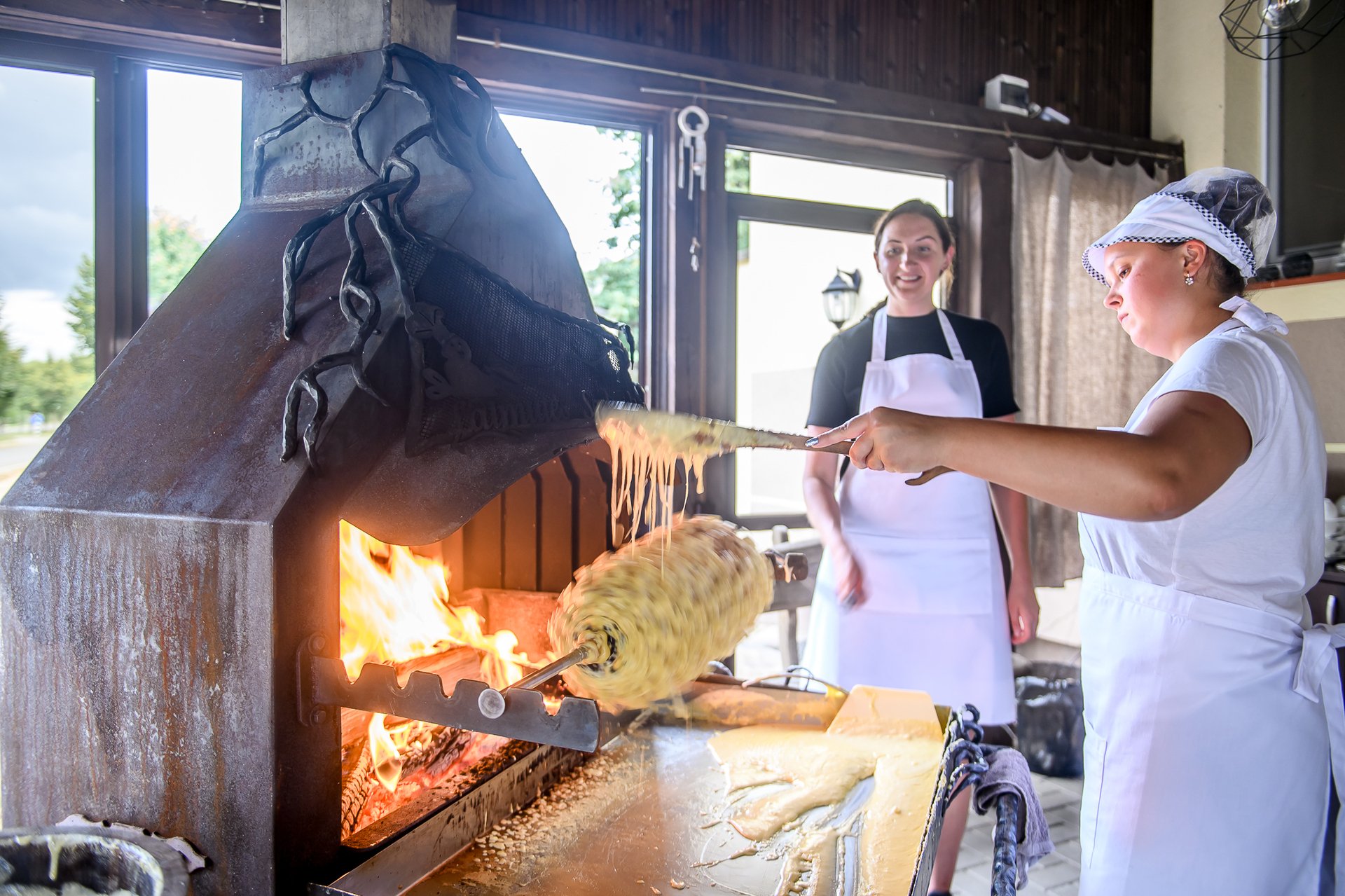
Antiquity in one place
If you ever find yourself driving past Laipgaliai, you should stop by even if you are not the biggest fan of antique and vintage things. The owners Henrita and Vaclovas Kontrauskai of folk art and folk household museum are known restaurant entrepreneurs and museum experts. They collected a huge life and creative collection from all around Lithuania. They maintain the museum and it is fully for free only you have to reserve the date and time for the visit. In Vilnius you can visit the culinary heritage museum that was opened by them. This museum is opened at Henrita’s grandparents’ homestead where spouses are very often guests and Hentita’s mom still lives there.
There are around one thousand exhibits in all of the houses that are in the territory. From different Lithuanian corners they collected about 400 millstones, a lot of dowry chests, carriages, wagons, farming tools, craftsman tools. The biggest acknowledgment for Kontrauskai would be your visit to the museum. They collected and accumulated the “old times” so today’s generation would see how past generations were living.
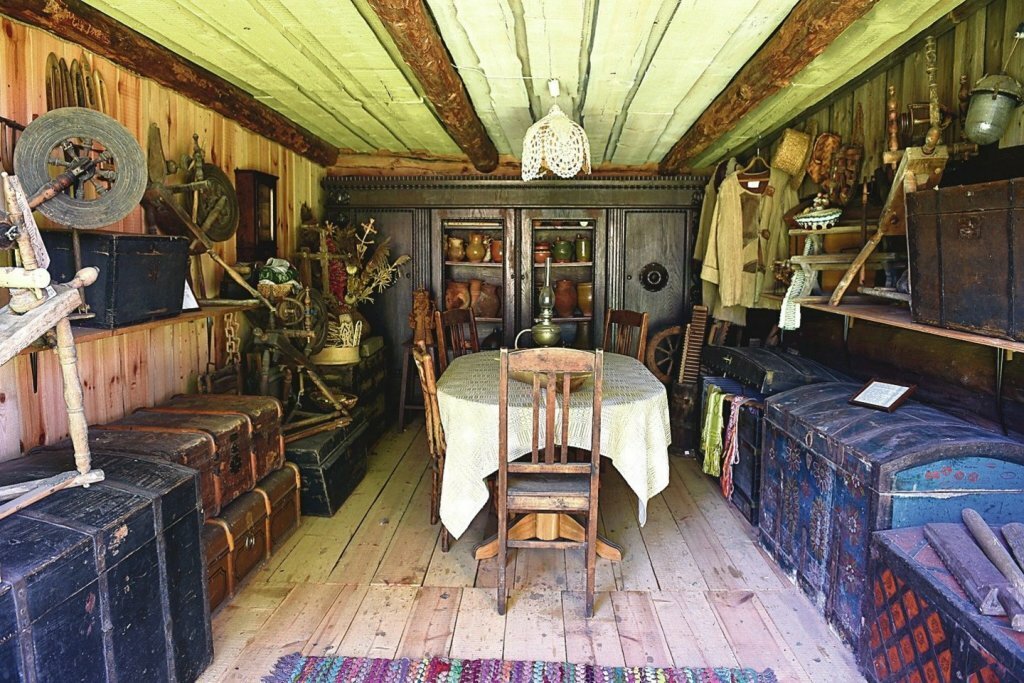
Nature gourmand – dendrological park in Tervydžiai
It is a dessert of plants for harmony searchers. If you go visit a park without the owner it wouldn’t be as interesting even though you can walk alone as well. We were welcomed by Linas Jakubonis and an amazingly beautiful and huge rooster Dobryninas that was led by a few chickens. We feel like we are on the other world over the fence, where the harmony, relaxation, the sound of nature and the smell of it linger in the air. Between trees, flowers and bushes, you can find beehives with working bees in them. Few of them start to buzz around the owner’s ear and he tenderly whispers “You are very kind little bees, fly away” and they do. The calmness gets inside of you. It feels very good to just walk and look around. Anthriscus are so tall that even some of the trees are almost smaller. The whole field is brightening white because of them. Linas noticed that 30 years ago they were much smaller. “Plants by growing this tall means that they are defending themselves from people” – stated confidently by the owner of the dendrological park.
 We walk by slowly with an empty mind and just admire the plants and trees. There are over 300 rare breed trees and plants. After the war Linas’ father Kazys Jakubonis who was more of a naturalist, opened the park and collected the plants. He could have talked non stop about the plants. His friend was a naturalist Tadas Ivanauskas. After taking back territory, Linas understood that he had to take care of the land and everything that his father collected so he decided to move in.
We walk by slowly with an empty mind and just admire the plants and trees. There are over 300 rare breed trees and plants. After the war Linas’ father Kazys Jakubonis who was more of a naturalist, opened the park and collected the plants. He could have talked non stop about the plants. His friend was a naturalist Tadas Ivanauskas. After taking back territory, Linas understood that he had to take care of the land and everything that his father collected so he decided to move in.
In 2015 scientists delegated by the Ministry of Environmental Protection worked in this park and hung up tablets with names of the objects and gave the park a protected status of dendrological country set in Tervydžiai. There is one more of this kind of set in Šakiai region. The fence, information table, benches, gazebo and pathways were built by using European Union funds.
The park is important for opening your eyes and teaching about the variety of plants. Back then yew trees grew here but Lithuanias who love horses, they killed off those trees because if a horse eats it, it would die. We walk close to a bee bed that the owner built. When you get in, you don’t want to leave anymore because the smell and sound of it makes you feel very relaxed. I have read that if you sleep a night in this kind of bed while listening to working bees and smelling the aroma, it will harmonize your organism and rebuild your bio field because bees are living according to a time of nature.
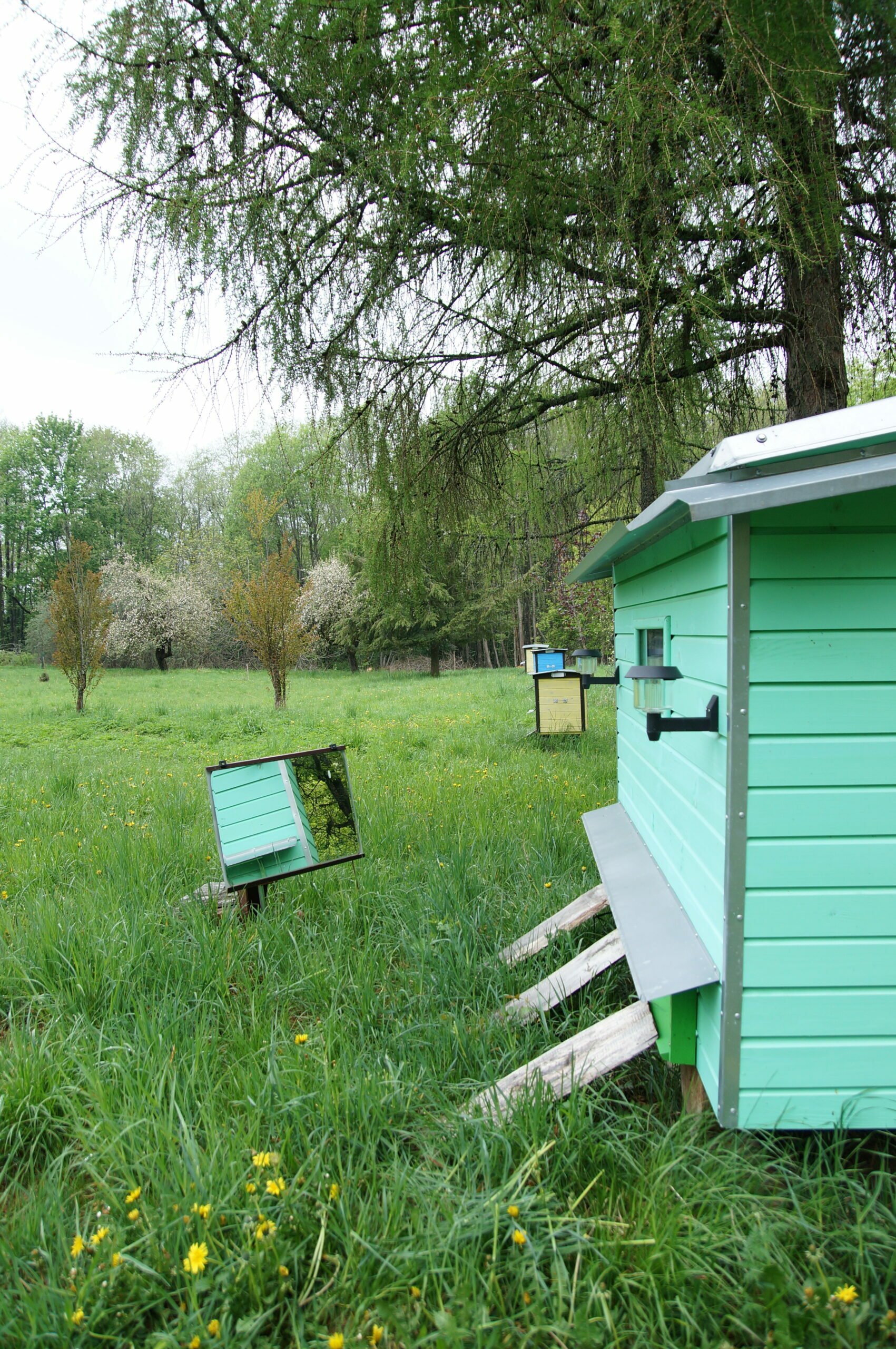 Linas has 21 families of bees because that is the number allowed for an amateur beekeeper. He does not sell honey and collects only overloaded honey. First of all, he looks after his bees and gives them enough honey because he does not give sugar or syrup. The bees are very healthy.
Linas has 21 families of bees because that is the number allowed for an amateur beekeeper. He does not sell honey and collects only overloaded honey. First of all, he looks after his bees and gives them enough honey because he does not give sugar or syrup. The bees are very healthy.
We walked close to an authentic steam sauna that was built by Linas’ father. Sometimes Linas heats it up for his friends. At home on the table there are 62 antlers that were found last year while he was walking in the woods. In winter he folds creative things out of paper, makes unique bags and takes care of the surroundings. On the 13th of June on Antaninės day after all plant buds burst out, he has to start to cut the grass. Linas lives by the time of nature. By the way, his clocks in the house are all set to a winter time because it is the real time of our timetable. He is able to do all his work in time, maybe even better than most people who are in a rush. How does he do that? Linas doesn’t use technology because it steals our time without even noticing. Tervydžiai park gave us a lot, not only to see a lot of rare plants but also something to think about. That is why we definitely will come back.
All these places were just a little part of the region that we traveled through where we saw and learnt so many things already. You can get all the information at Rokiškis tourism and business information center.
Ona Nosevičienė
Rokiškis TVIC archive photos
